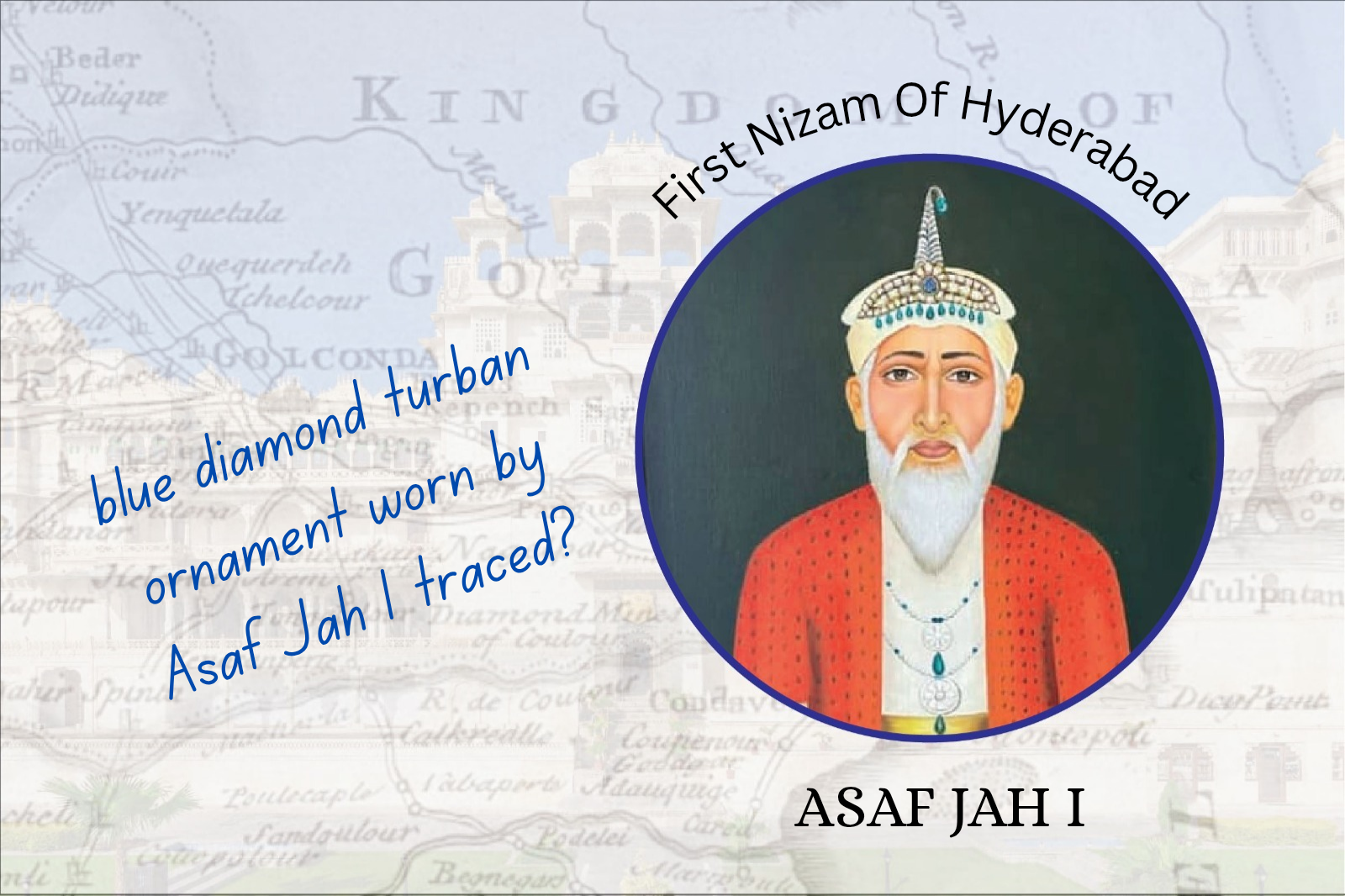NIZAMS DIAMOND TURBAN ORNAMENT TRACED?
Talk about a lavish turban ornament worn by the first Nizam of Hyderabad (Asaf Jah 1), has been heard over the years. Asaf Jah 1 named himself as the Nizam of Hyderabad in 1724 and was belieived to have worn the diamond turban ornament, only on special occasions. Reports from many sources suggested that the diamond was a pear shaped, Golconda blue diamond - the diamond weighed around 6 to 8 carats. Neither the pendant nor the turban ornament, has been seen for centuries.
Occasional mention was also made about another diamond turban ornament, with a pink Golconda diamond in the center. It is claimed that this turban ornament was also part of the first Nizam's treasures. Important to understand that, the Nizams would have owned a large collection of turban ornaments, most of them would have diamonds as accent stones. The two diamond turban ornaments, one with the blue diamond and the other with the pink diamond - had these diamonds as the center stone of the ornament. This was what made the turban ornaments unique and very special.

THE SERAPHIM BLUE DIAMOND
A few diamond experts claim to have seen a fine blue color Golconda diamond, the piece part of a high value Russian collection. The diamond is being referred to as the Seraphim Blue Diamond. The shape, approximate size, color and clarity of this diamond, is very similar to the details mentioned in earlier reports. The story narrated in many reports that the second Nizam of Hyderabad, handed over the blue diamond from the first Nizam's turban ornament to the French, has many believers. This was apparently done in exchange for military support from the French. While earlier reports did claim that the Seraphim Blue Diamond, was originally mounted in the turban ornament, the actual diamond was never claimed to have been seen.
THE TURBAN ORNAMENT
Going by information supported by various reports published on different sources, the actual turban ornament that held the Golconda diamond in the center, has not been traced - noticeably, not much importance is being given to the ornament. Considering that the turban ornament was worn by the first Nizam of Hyderabad and the Seraphim Blue DIamond, which formed part of the ornament was handed over to the French by the second Nizam - the ornament itself was fairly recent (at that time) and did not have much historical value. The French quite obviously used the Golconda blue diamond, as a mode of payment. No records detail whether the Seraphim Blue Diamond, formed a part of the payment or covered the entire cost - of the transaction. Just to recap, the other part of the transaction was that the French, would provide military support to the Nizam.
So the fact that the blue diamond was separated from the turban ornament that belonged to the first Nizam, is implied from the actions of the second Nizam. The Seraphim Blue Diamond on its own, hold tremendous historic significance. It has never appeared at an auction until today, the value of such legendary diamonds is hard to assess. There is little doubt that a highly touted auction by Sotheby's or Christie's, for this historic Golconda diamond would attract exorbitant per carat bids.
As for the turban ornament with the pink Golconda diamond, the wait could be a long one. The Nizams were not known for keeping detailed records of their treasures. Sales, transfers or even gifts that would often include precious diamonds went unrecorded. The negligence in keeping records also resulted, in thefts at various times. The reign of the Nizams of Hyderabad ended in 1948, that was during the rule of the seventh Nizam (Asaf Jah VII). The Indian government took over Hyderabad and made it a part of India. Most of the Nizam's treasures were transferred to the Indian treasury at that point.
NOTES
Specialized expertise and knowledge are essential when considering an investment in high-priced, historically significant assets, including jewelry and diamonds. It is advisable to purchase such assets only from reliable and well-established sources to ensure authenticity and value.
